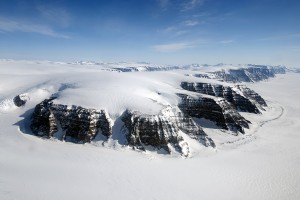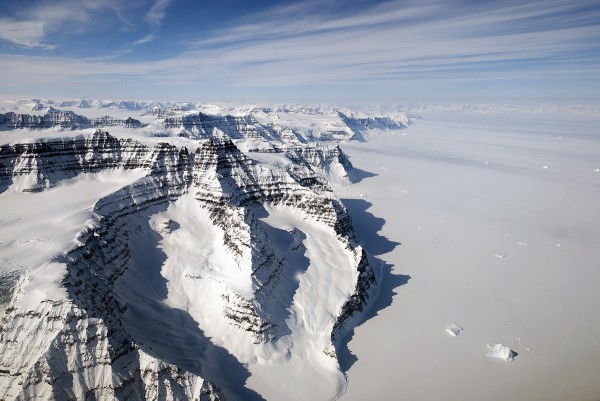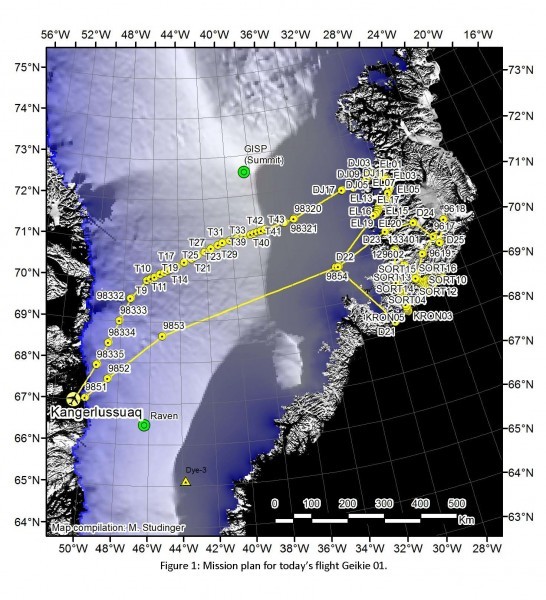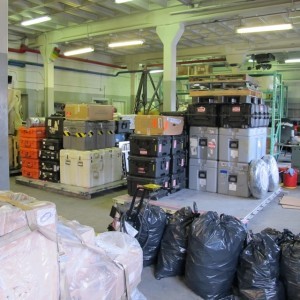Once more it is time to change locations, we are packing up to fly back to Thule, where we will finish out the campaign. Packing involves more than just packing personal gear. One of the gravity/magnetics team’s major projects will be taking apart the GPS and magnetics base stations, packing them in shipping cases and putting them on pallets. The Air National Guard will then load them onto their C130 cargo planes and transport them up to Thule. The GPS ground stations are key to our measurements. Having a receiver at a stationary location provides a baseline for the noise or jitter in the measurements, which we then remove from measurements taken on the plane. This is especially important for the gravity team, because we need to use the GPS measurements to determine and remove airplane accelerations from our gravity measurements. The same idea applies to the magnetics measurements, as the Earth’s magnetic field is constantly varying and we want to remove that natural variation to isolate any anomaly resulting from the rocks we are flying over. Once in Thule we will quickly get the stations reinstalled so that they have 24 hours to settle prior to our first flight.




